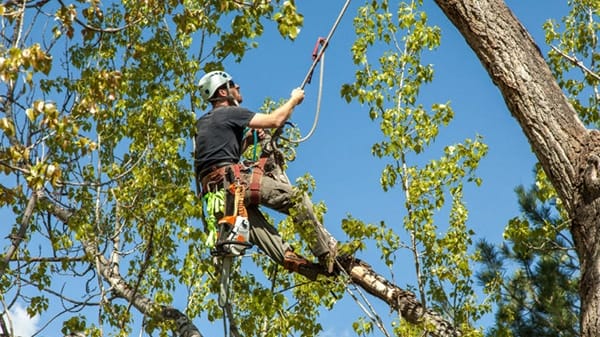If you’ve ever been impressed at the delicious sweetness of fresh figs and dreamed of planting your own fig tree, you’re in for a treat. Today, we’ll go into the fascinating and fulfilling process of cultivating fig trees from cuttings, allowing you to appreciate the bounty and aesthetic appeal of these delectable fruits in your yard.
Selecting the Appropriate Cuttings to Grow Fig Trees
To start your fig growing journey off right, start by selecting healthy cuttings from an existing fig tree. Look for branches that are between 6 and 8 inches long, with a few leaf nodes. These nodes are vital because they contain the cells that develop into roots, which create the framework for a sturdy fig tree.
When to Take Cuttings for the Growth of Fig Tree
Time is of the essence when picking fig cuttings. It is ideal to take these cuttings from potential fig trees during the tree’s dormant season, which is often late winter or early spring. The tree will be more vulnerable to the cutting process because it won’t be actively developing at this time.
Tools Required to Grow Fig Trees from Cutting
Before starting the exciting job of multiplying fig plants, assemble your equipment. All you’ll need is small pots, a rooting hormone (available easily at garden centers), a growing medium (a mixture of perlite and peat works nicely), and a warm, nurturing environment.
Steps to Grow Fig Trees from Cuttings
Select Your Slices: Make sure the branches you choose are pest- and disease-free.
Trim Carefully: Cut the branches at a 45-degree angle, directly below a leaf node, using sharp pruning shears.
Apply Rooting Hormone: Thoroughly cover each branch’s cut end by dipping it into the rooting hormone.
Get the growing medium ready: Assemble tiny pots with a perlite and peat mixture, ensuring that the cuttings have a well-drained environment.
Grow Carefully: Bury at least two nodes in the growth media by inserting the treated end of each cutting there.
Use Water Cautiously: Make sure the growth medium is always damp but not soggy. Fig trees require well-drained soil, therefore striking the correct equilibrium is essential.
Make a Mini Greenhouse: To produce a humid atmosphere that promotes root development, cover the pots with clear plastic or put them in a plastic bag.
Provide Light and Warmth: Set the pots in a warm spot that receives some indirect sunshine. Warm temperatures are great for fig trees, therefore keeping the temperature at about 70°F (21°C) is best.
Watch and Wait: Patience is a virtue in the garden world. If you closely monitor your cuttings, you should witness new growth in a few weeks.
Transplanting Time: Once your cuttings have strong roots and new leaves, you may either transplant them into larger pots or plant them directly in the garden.
Typical Problems and Their Fixes while Grow Fig Trees from Cutting
Just like in any gardening project, difficulties might occur. Here are some troubleshooting tips to navigate potential hurdles:
Yellowing Leaves: If your fig tree’s leaves are turning yellow, it could be a sign of overwatering. Adjust your watering routine to allow the soil to dry out between waterings.
Lack of Root Development: Try applying a larger dosage of rooting hormone or modifying the environment to give more warmth and humidity if your cuttings aren’t displaying any indications of root formation.
Pest Invasion: Keep an eye out for pests like aphids or mites. A gentle spray of insecticidal soap can help keep these unwanted visitors at bay.
Selecting the Best Fig Varieties
Fig trees are available in a range of cultivars, each with a distinct flavor profile and growth pattern. Consider these well-liked fig varieties:
Celestine: Known for its petite, delicious, brownish-purple fruits, Celeste is a robust choice that can withstand low temperatures in a variety of locales.
Brown Turkey: This traditional type yields figs with a rich, sweet flavor that are medium to big in size and have brown skin. It is a trustworthy option for home gardening.
Chicago Hardy: The Chicago Hardy fig is a good option if you live in a chilly area. This type will still yield delicious figs even in the winter.
Black Mission: Known for their rich, sweet flavor, Black Mission figs have pink flesh and dark purple skin. They are a favorite while eating fresh food.
Taking Care of Your Growing Fig Trees
After your fig trees have established, regular maintenance is necessary to ensure a plentiful yield. The following advice can help your fig trees grow:
Sunlight: The sun is what fig plants adore. Make sure they get six to eight hours a day in direct sunshine.
Watering: Although fig trees can withstand some drought, regular watering is still quite important, especially in the summer. For deep root development, aim for deep, infrequent watering.
Fertilization: To promote healthy growth and fruit production, fertilize your fig trees in the spring with a balanced fertilizer.
Pruning: To shape your fig tree and get rid of any dead or broken branches, prune it in late winter or early spring. In addition to promoting air circulation, this guards against illness.
Winter Protection: If you live in a colder area, you might think about mulching the tree’s base to keep the roots warm.
FAQs
Is it possible to cultivate fig trees from cuttings at any time of the year?
A: The dormant season, which usually occurs in late winter or early spring, is the ideal time to remove fig cuttings from the tree. This guarantees ideal circumstances for effective dissemination.
What is the duration required for fig cuttings to grow roots?
A: In a few weeks, under the right circumstances, fig cuttings may begin to exhibit indications of root formation. However, variables like humidity and temperature might affect the precise timing.
Which kind of soil is ideal for growing cuttings of figs?
A soil composition that drains effectively is preferred by fig plants. The best growth media for fig cuttings may be made by combining perlite and peat.
How much sunshine is necessary for fig trees?
A: Fig trees require six to eight hours of direct sunshine every day in order to flourish. To ensure the best development, place them where there is enough sunshine.
What time of year is ideal for fig harvesting?
A plump, richly coloured fig that feels smooth to the touch is ready for harvesting. If the fig can be readily removed from the tree with a gentle twist, it’s ready to be picked.
Conclusion
Planting fig trees from cuttings is a rewarding experience that lets you see the wonders of life taking place right in your own garden.
Every stage of the process, from the thoughtful selection of cuttings to the delightful reward of an abundant crop, draws you nearer to the natural world and the pleasures of gardening.
Now, prepare for this exciting journey by rolling up your sleeves, gathering your equipment, and starting to grow fig trees from cuttings. When you savor the delicious flavor of fresh-picked figs from your own tree, your future self will be grateful. Cheers to your successful gardening!




